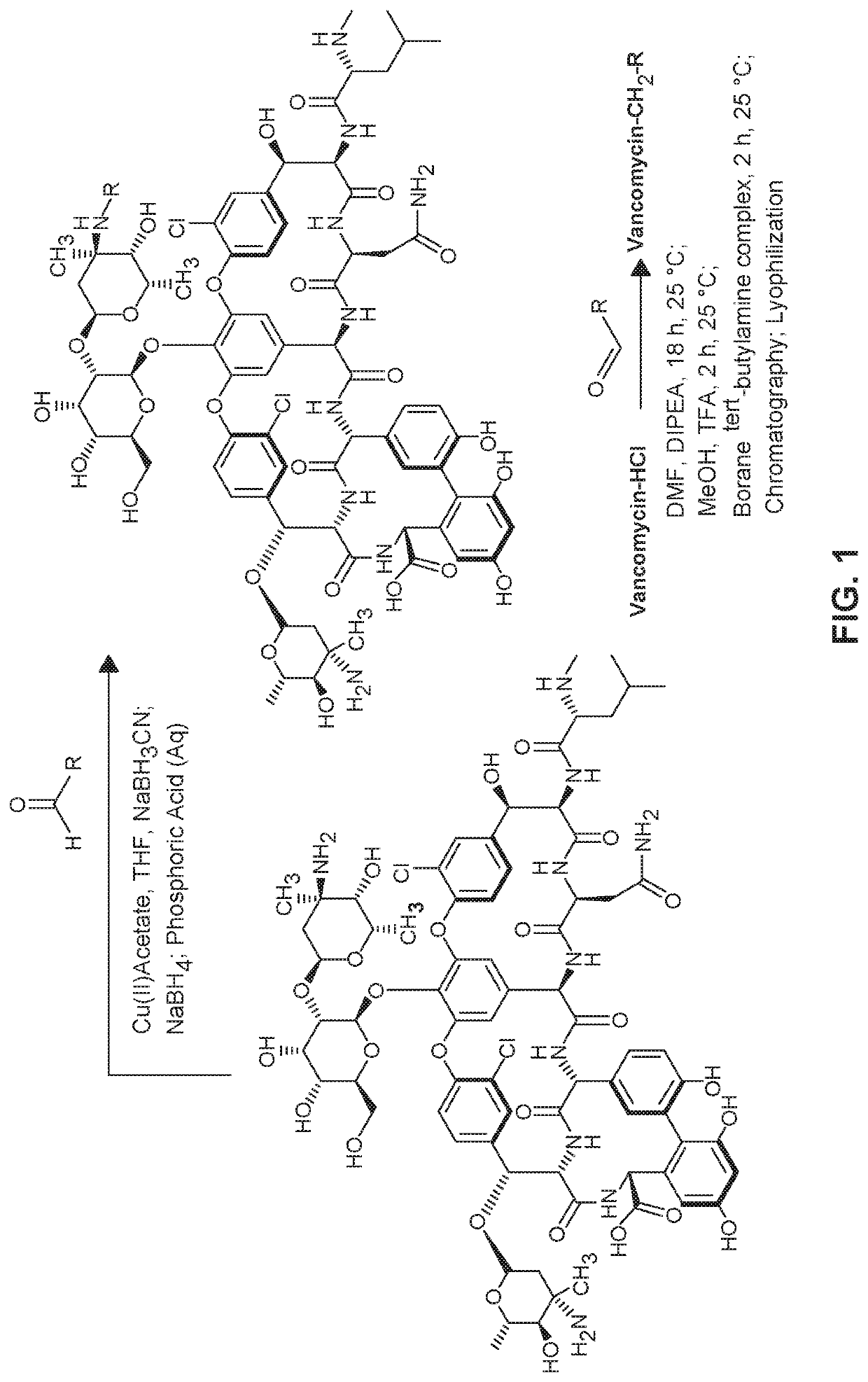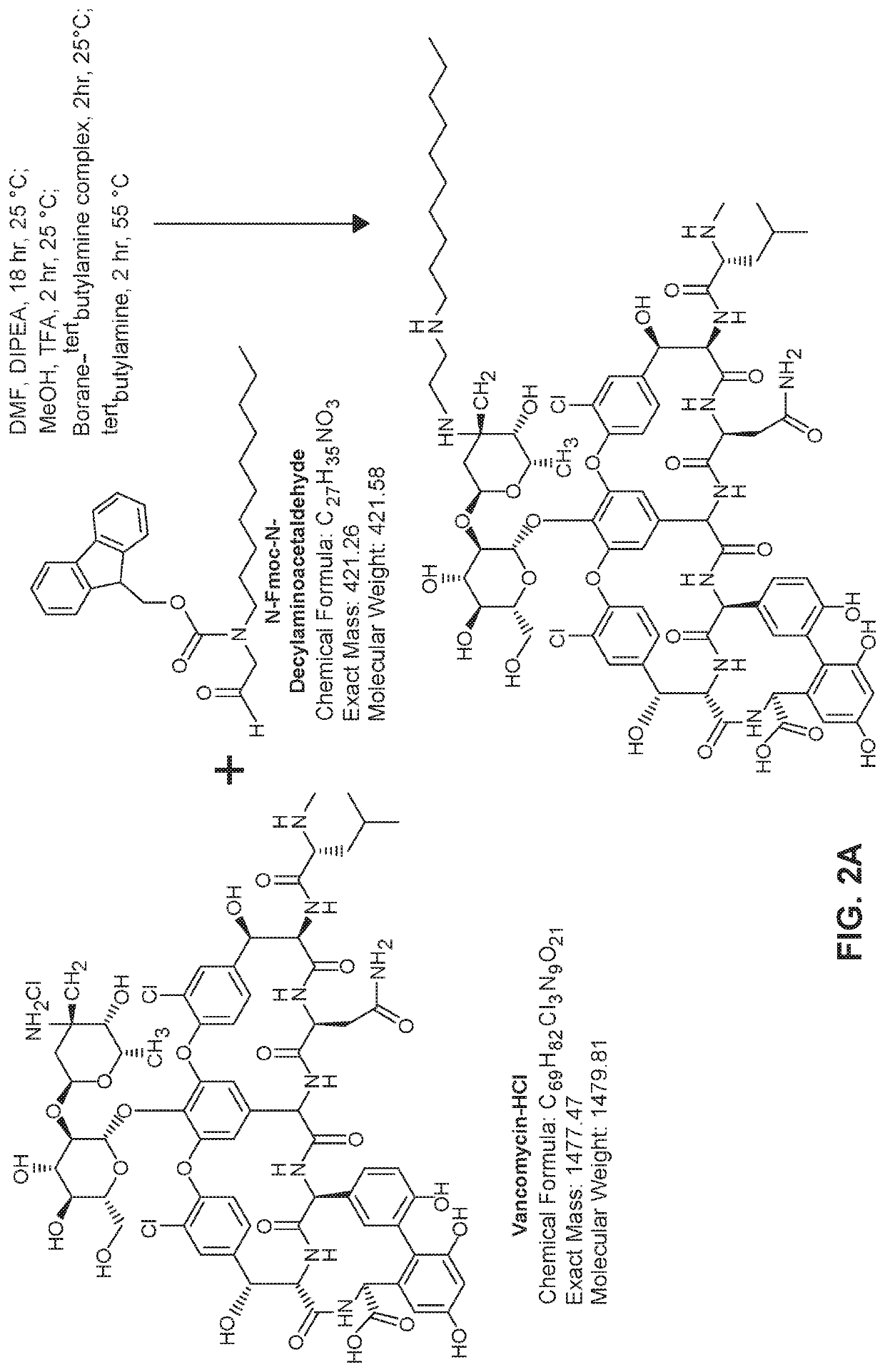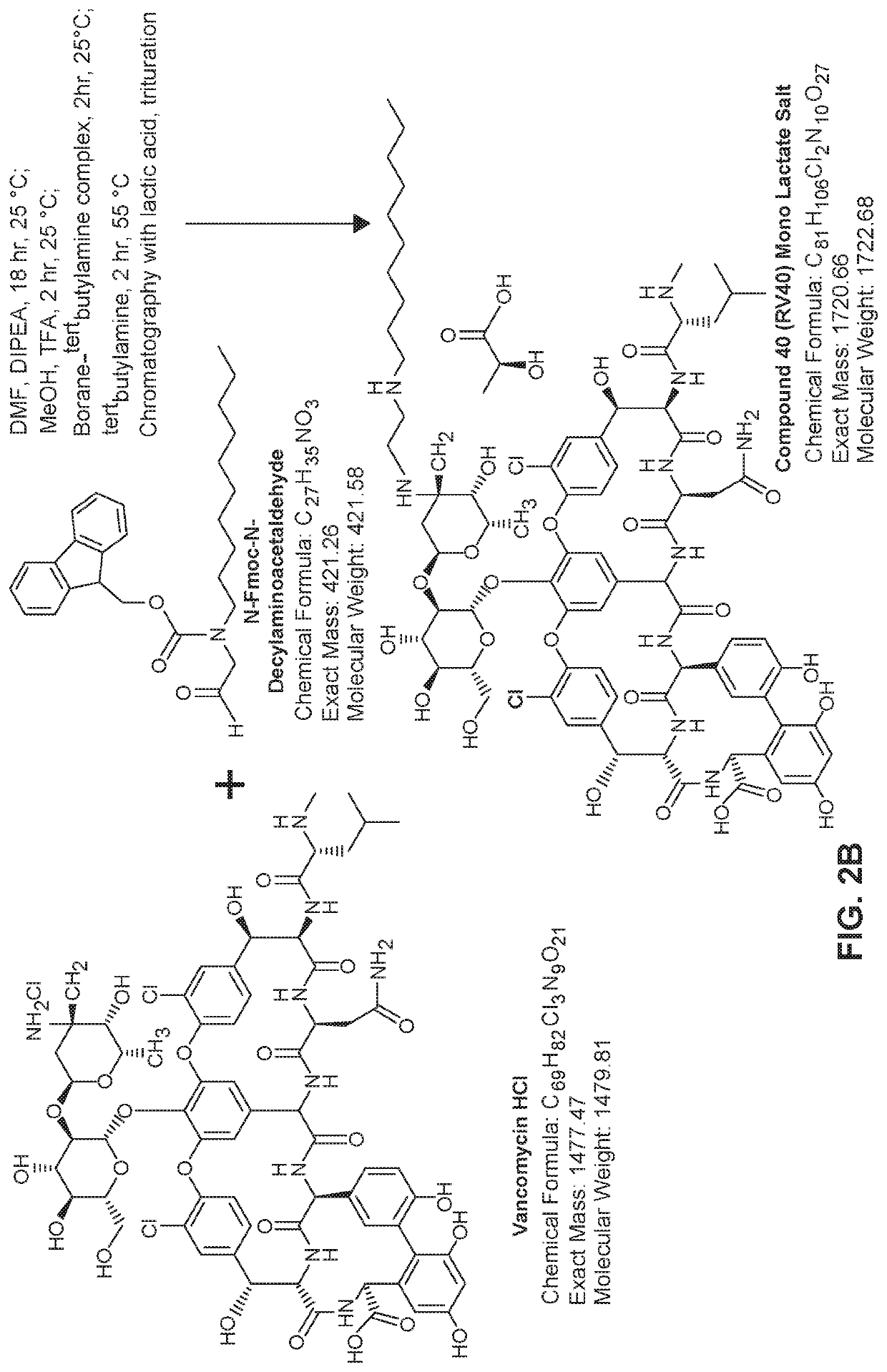Glycopeptide derivative compounds and uses thereof
a technology of glycopeptide and derivative compounds, applied in the direction of peptides, antibacterial agents, peptides/protein ingredients, etc., can solve the problems of significant challenge, treatment and management of such infections are therapeutic challenges
- Summary
- Abstract
- Description
- Claims
- Application Information
AI Technical Summary
Benefits of technology
Problems solved by technology
Method used
Image
Examples
example 1
of Glycopeptide Derivative Via Reductive Amination
[0255]Glycopeptide derivatives were prepared as follows. The synthesis scheme is also provided at FIG. 1.
[0256]To a reactor vessel equipped with temperature control and agitation was added anhydrous DMF and DIPEA. The resulting solution was heated to 65° C. with agitation and Vancomycin HCl or telavancin HCl was added slowly in portions. Heating was continued until all of vancomycin HCl or telavancin HCl had dissolved (5-10 min).
[0257]The beige colored solution was allowed to cool after which a solution of the desired aldehyde dissolved in DMF was added over 5-10 min. The resulting solution was allowed to stir overnight, typically producing a clear red / yellow solution. MeOH and TFA were introduced and stirring was further continued for at least 2 h. At the end of the stirring period, the imine forming reaction mixture was analyzed by HPLC which was characteristically typical. Borane tert-butylamine complex was added in portions and t...
example 2
of Vancomycin Derivative RV40 (Compound 40)
[0258]General synthesis: To a temperature controlled reactor vessel equipped with an overhead stirrer was added a suitable reaction solvent (DMF or DMA) and an organic base (typically DIPEA). The temperature was increased to approximately 60° C. and vancomycin HCl was added. The warm reaction mixture was agitated at elevated temperature for approximately 20 minutes at which point all vancomycin HCl had dissolved and the reaction mixture was returned to room temperature. To the reaction mixture was then added 9H-fluoren-9-ylmethyl N-decyl-N-(2-oxoethyl)carbamate (N-Fmoc-N-decylaminoacetaldehyde) dissolved in a suitable reaction solvent (DMF or DMA). The reaction mixture was agitated with an overhead stirrer overnight at which point a suitable reducing agent, acid catalyst (e.g., TFA), and a protic solvent (e.g., MeOH) were added. The reaction mixture was agitated by an overhead stirrer at room temperature for approximately two hours at which...
example 3
of Vancomycin Derivative RV40 (Compound 40)
[0261]General synthesis: To a temperature controlled reactor vessel equipped with an overhead stirrer was added a suitable reaction solvent (DMF or DMA) and an organic base (typically DIPEA). The temperature was increased to approximately 60° C. and vancomycin HCl was added. The warm reaction mixture was agitated at elevated temperature for approximately 20 minutes at which point all vancomycin HCl had dissolved and the reaction mixture was returned to room temperature. To the reaction mixture was then added 9H-fluoren-9-ylmethyl N-decyl-N-(2-oxoethyl)carbamate (N-Fmoc-N-decylaminoacetaldehyde) dissolved in a suitable reaction solvent (DMF or DMA). The reaction mixture was agitated with an overhead stirrer overnight. To the reaction mixture was added a protic solvent (e.g., MeOH) and an acid catalyst (e.g., TFA) and the reaction mixture was allowed to stir for 15 minutes prior to addition of a suitable reducing agent (e.g., borane tertbutyl...
PUM
| Property | Measurement | Unit |
|---|---|---|
| Electrical resistance | aaaaa | aaaaa |
Abstract
Description
Claims
Application Information
 Login to View More
Login to View More - R&D
- Intellectual Property
- Life Sciences
- Materials
- Tech Scout
- Unparalleled Data Quality
- Higher Quality Content
- 60% Fewer Hallucinations
Browse by: Latest US Patents, China's latest patents, Technical Efficacy Thesaurus, Application Domain, Technology Topic, Popular Technical Reports.
© 2025 PatSnap. All rights reserved.Legal|Privacy policy|Modern Slavery Act Transparency Statement|Sitemap|About US| Contact US: help@patsnap.com



